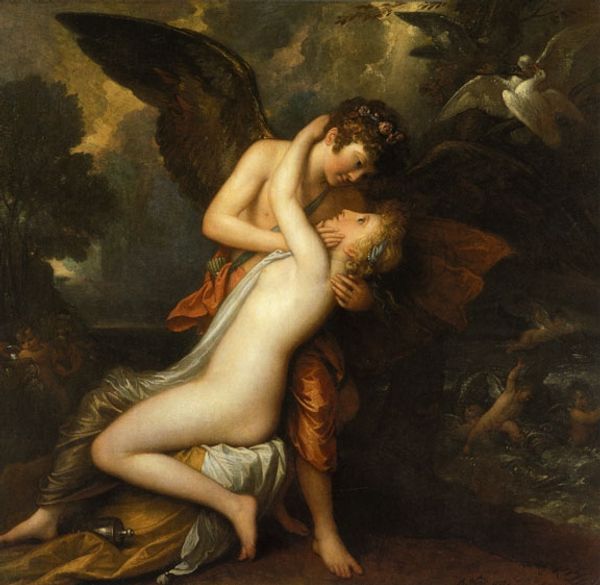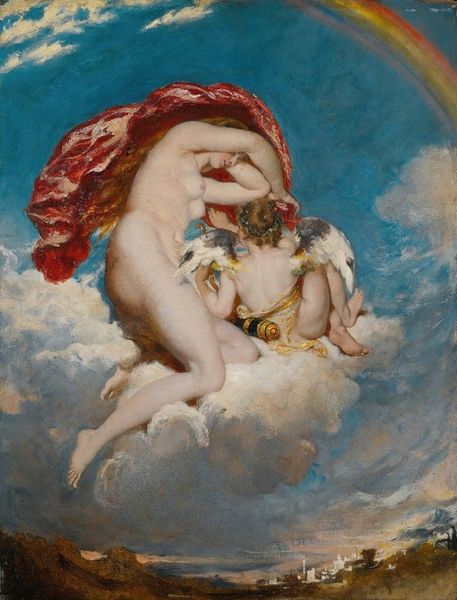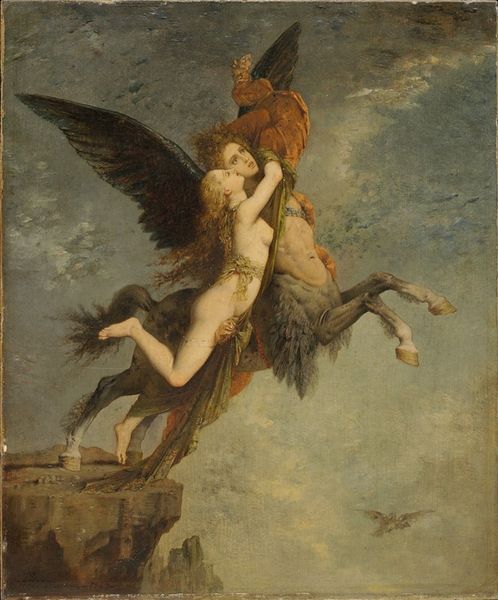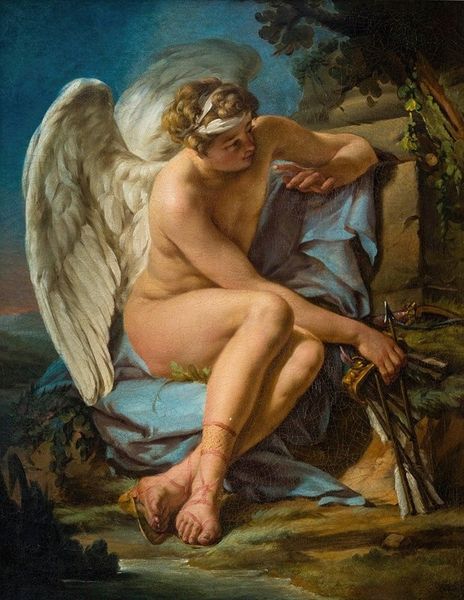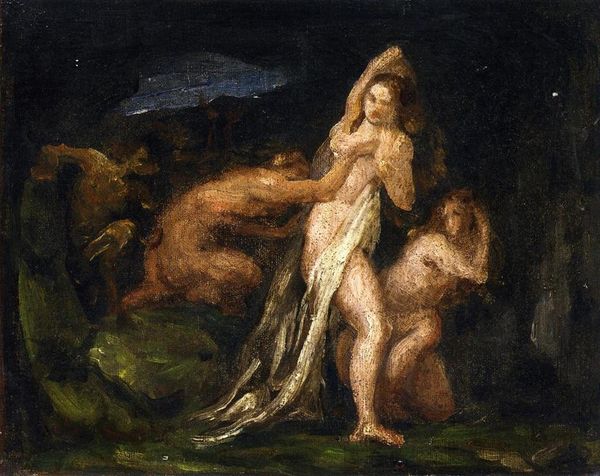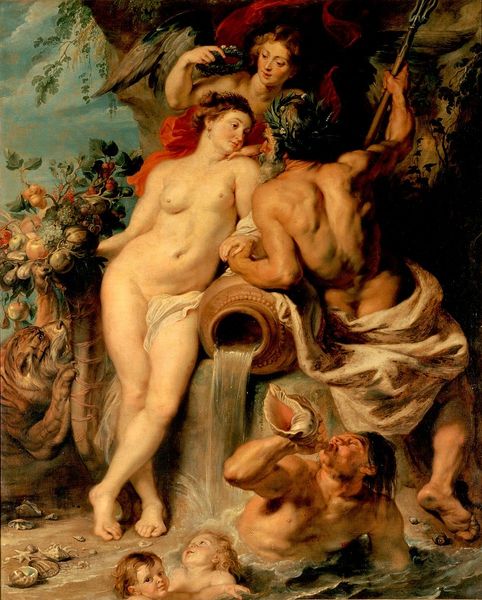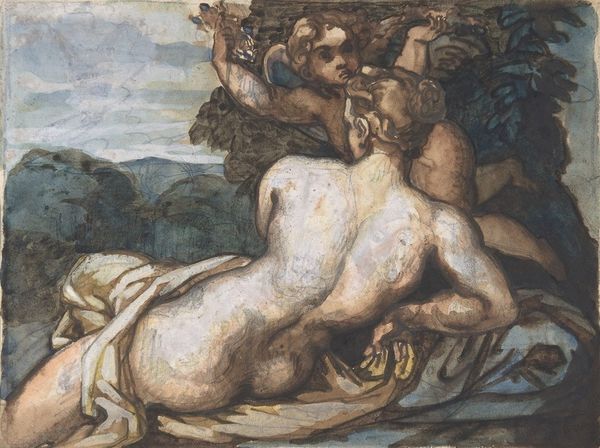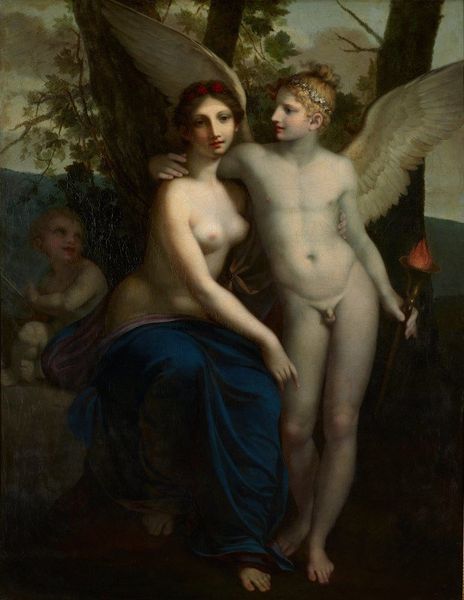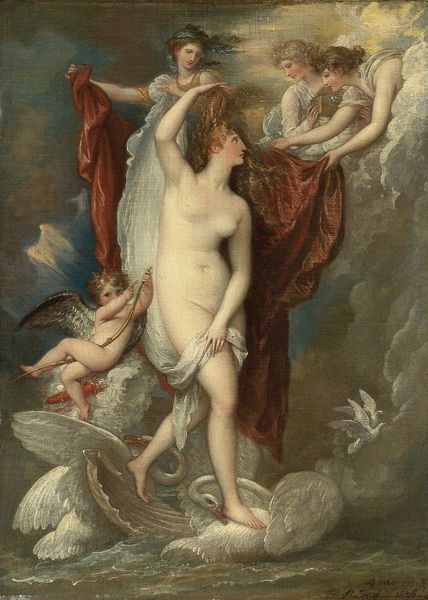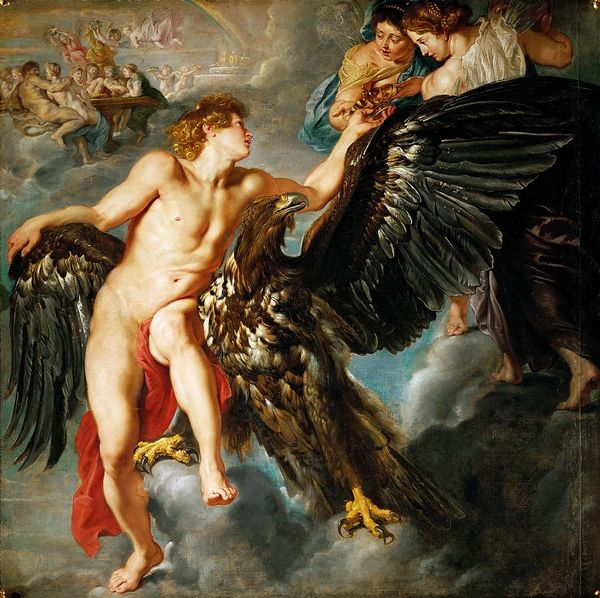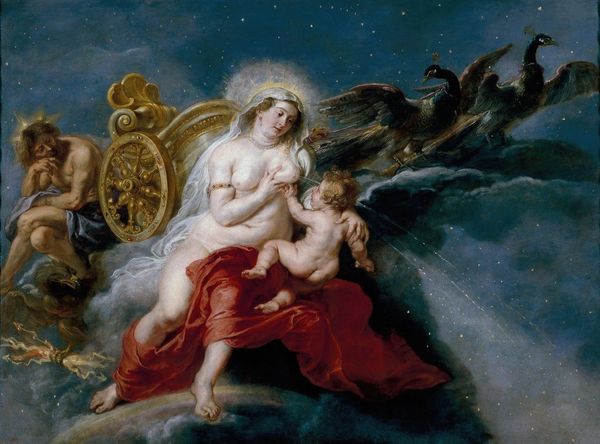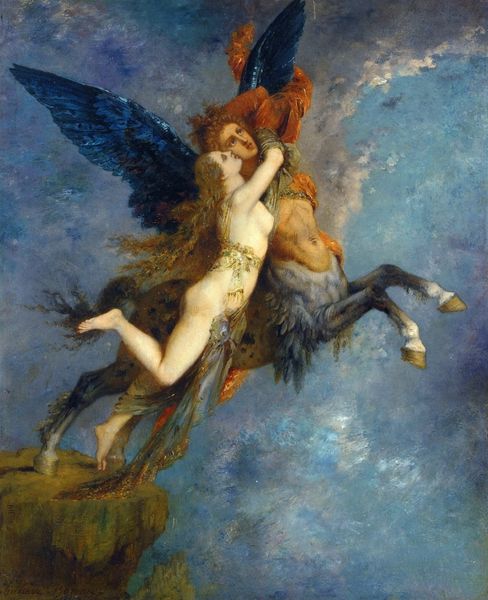
painting, oil-paint
#
allegory
#
painting
#
oil-paint
#
figuration
#
oil painting
#
romanticism
#
mythology
#
nude
Copyright: Public Domain: Artvee
Curator: Théodore Géricault's treatment of Leda and the Swan presents us with a challenging interpretation of a well-worn myth. Editor: It's certainly striking. There's a palpable tension, isn't there? It's much less sensual than I've come to expect, more…confrontational. Curator: Indeed. Consider the use of allegory here. This isn't just a depiction of mythology, it's exploring the subjugation and forced acceptance of the divine will. Editor: Looking at this, knowing it’s probably painted in the early 19th century, I’m struck by its uneasy relationship with the expectations of the time. Was it publicly displayed? I wonder how viewers processed the somewhat coarse treatment of the nude figure and this…violent encounter. Curator: The emotional weight here is significant. The swan, an ancient symbol of purity and grace, takes on a darker aspect, representing the imposing, irresistible force of power and divine destiny. Editor: I keep returning to Leda’s expression, or rather, the absence of it. Her face is partially obscured, but there’s a passivity that is incredibly disturbing when coupled with the swan’s forceful presence. Did the societal conventions play a role? A suppression of female anger? Or something else entirely? Curator: These power dynamics were, and perhaps still are, reflected in the artistic license taken to present Leda as acquiescent. There’s also something very disturbing, very potent in the contrast. It speaks of cultural acceptance and expectation in an unequal situation. The cultural memory it calls forth—a sense of historical inevitability. Editor: Absolutely. Knowing the period – Romanticism at its height – you see how Gericault uses shadow and dramatic composition to enhance the emotional atmosphere of this controversial piece. What was the intent, I wonder? Was it truly to question that traditional power, or simply represent the scene? Curator: Both perhaps. Art often resides in those contradictions. The visual representation itself can start to work as cultural memory. And sometimes an echo of a historical truth that will be transformed into contemporary political understanding of injustice and abuses of power. Editor: Thank you; I can see this piece with totally different eyes. Curator: I'm grateful to share a few thoughts on it.
Comments
No comments
Be the first to comment and join the conversation on the ultimate creative platform.
